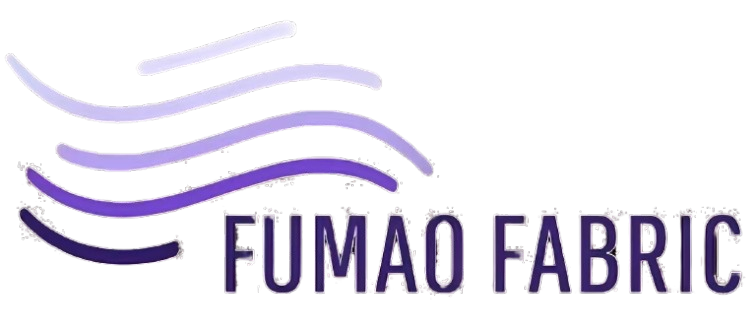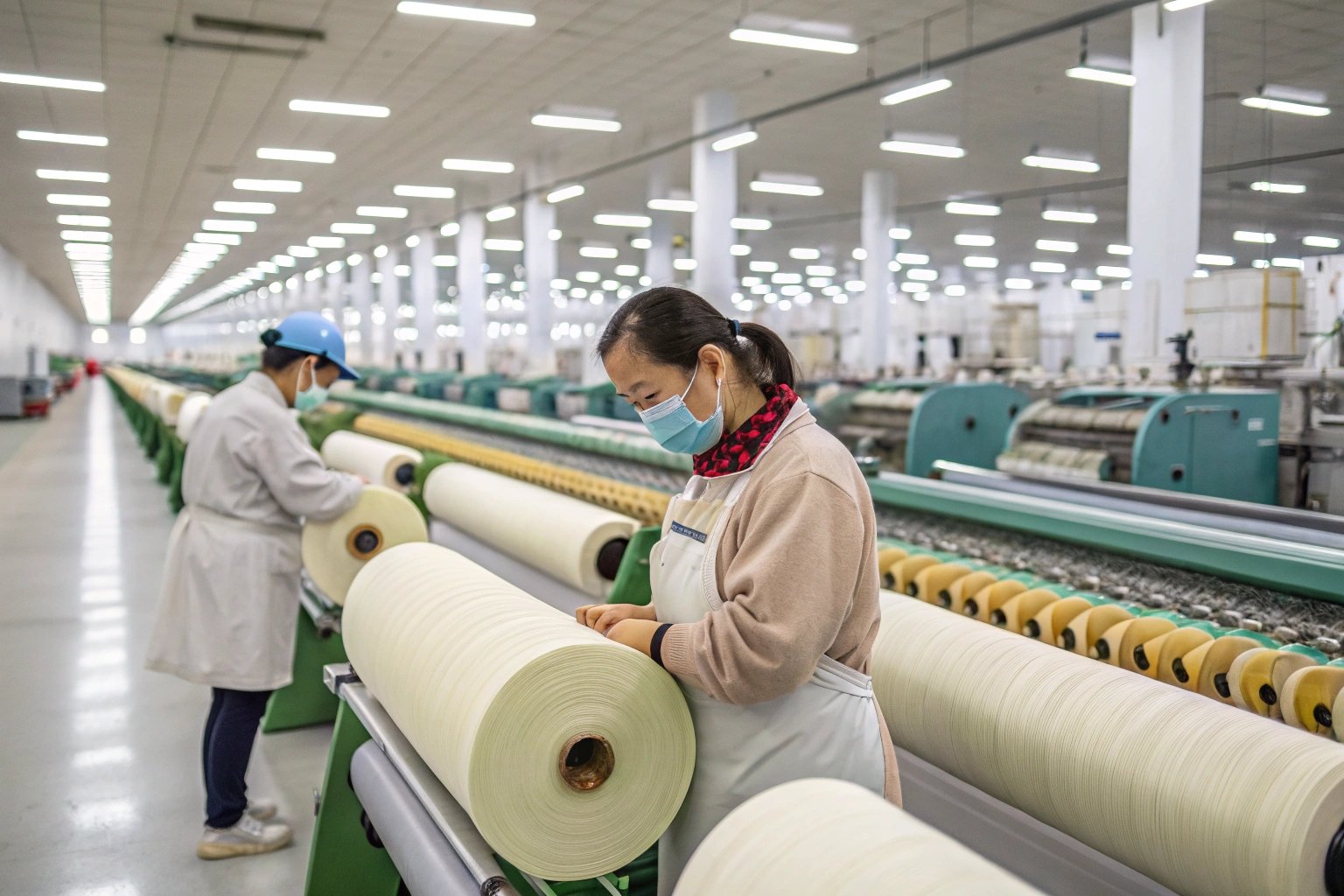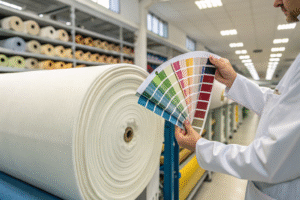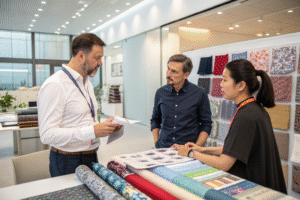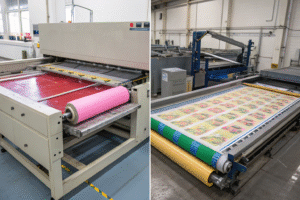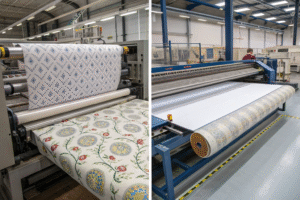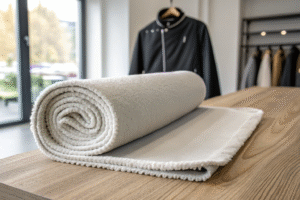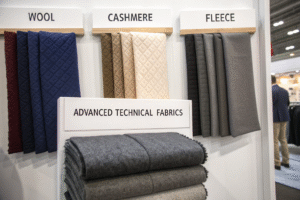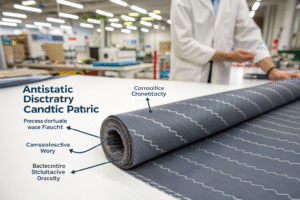In the ever-growing world of sustainable fashion, organic cotton twill has emerged as a leading material for eco-conscious brands. But for many new designers, sourcing teams, and boutique owners, one key question looms large: What are the minimum order requirements to get started with organic cotton twill production from China?
The minimum order quantity (MOQ) for organic cotton twill often depends on fiber sourcing, weaving scale, and finishing processes—but there are flexible solutions available for different buyer sizes.
If you’re sourcing from a comprehensive mill like Fumao Fabric, the answer isn’t just about the MOQ number. It’s about understanding the entire production ecosystem: from raw material traceability to dyeing and certification. Let me walk you through everything that shapes MOQ for this eco-friendly yet premium fabric.
What Is the Typical MOQ for Organic Cotton Twill?
Before you commit to production, understanding baseline MOQs helps budget better and negotiate smarter.
Most organic cotton twill producers in China require a starting MOQ between 500 to 1000 meters per color, depending on weight, weave density, and certification needs.
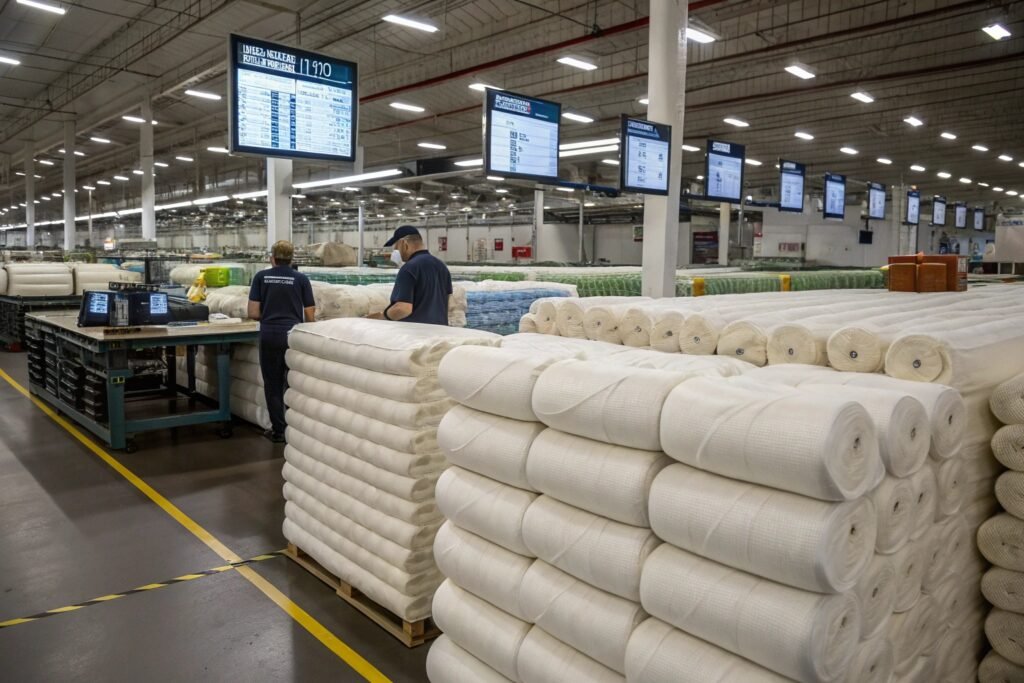
Why Do MOQs Differ Among Suppliers?
MOQ isn’t a random number—it’s influenced by the supply chain itself. The MOQ for GOTS-certified organic cotton twill will always be higher due to stricter segregation of organic fibers during spinning and weaving. For instance, a GOTS-certified factory must maintain separate inventory and spinning channels from non-organic cotton, making small batches expensive.
On the other hand, uncertified but still eco-responsible twill may offer flexibility down to 300 meters per color. However, that typically lacks traceability which many brands today prioritize. MOQ also depends on whether you’re using a common twill weight (e.g., 220–260 GSM) or asking for custom weave structures.
Can MOQ Be Lowered for Small Brands?
Yes—but with the right factory. At Fumao, we sometimes accommodate lower MOQs around 200–300 meters per style for clients combining SKUs or colors under one dye lot. This “bulk color grouping” strategy helps keep fabric consistent while reducing per-style production volume. It’s especially useful for capsule collections or online-only drops.
We also offer shared loom scheduling, where small brands can join others in using the same weaving program, splitting the output. It's a collaborative solution growing in popularity among eco-driven fashion startups.
What Affects the MOQ for Organic Twill Orders?
There’s no one-size-fits-all MOQ in this business. You have to look at the full picture.
Key MOQ influencers include yarn origin, certification type, color matching process, dyehouse capability, and finishing treatments like brushing or coating.
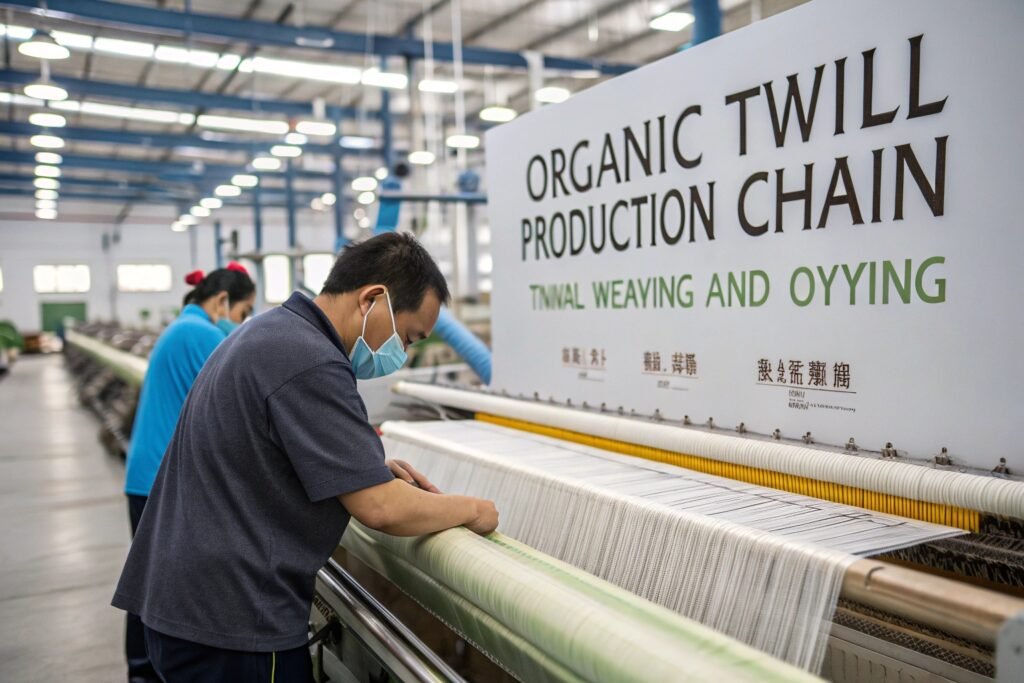
Does Certification Raise the MOQ?
Definitely. When producing certified organic cotton twill, the certification body (e.g., GOTS or OEKO-TEX) enforces full documentation at every stage. This means your factory needs to process a dedicated production run just for you, even if it’s just 1000 meters.
Additionally, traceable organic yarn is limited in global supply. If your supplier doesn’t carry pre-ordered yarn, they might impose higher yarn MOQs—sometimes up to 300 kg per lot, even before weaving begins.
How Do Dyeing and Finishing Impact Minimums?
Custom dyed colors often carry an MOQ of at least 300–500 meters per color, due to the cost of dye bath prep, lab dips, and cleaning between color runs. If you request special coatings (e.g., water-repellent or wrinkle-resistant), the fabric must be treated in a separate line, increasing setup time and cost.
Some small buyers work around this by accepting a limited color palette from stock shades. Others opt for greige fabric orders and dye locally, but that often complicates certification and consistency.
Where to Find Low-MOQ Organic Cotton Twill Manufacturers?
Not all mills offer MOQ flexibility—but some Chinese suppliers are geared toward helping small and medium brands grow.
Look for vertically integrated factories with stock-supported organic yarns, shared loom options, and in-house testing labs. They’re best positioned to lower MOQs and maintain quality.
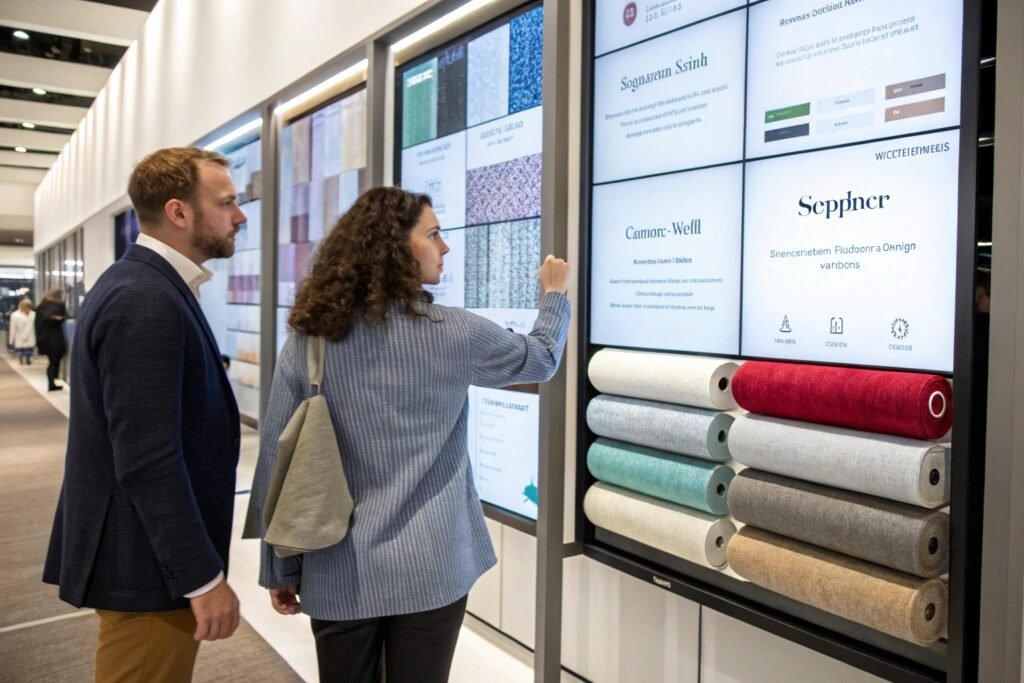
Are Alibaba and B2B Platforms Reliable?
Yes—with caution. Platforms like Alibaba list hundreds of suppliers, but you must vet for legitimacy, test sampling speed, and request documentation. Many list low MOQs but later require hidden surcharges or switch to blended cotton.
Instead, try portals like TexIndex or LinkedIn B2B textile groups, where you may connect with verified Keqiao-region suppliers like Fumao directly.
What Questions Should I Ask a Potential Supplier?
Ask if their MOQ is per color or per style. Request a sample MOQ vs bulk MOQ breakdown. Inquire whether the yarn stock is on-site or needs external sourcing. Check how long the lead time is for dyeing per color.
Also, request prior shipping docs or client references to ensure the supplier can handle overseas logistics with experience. Factories with end-to-end support—from yarn to shipping—are ideal for low-MOQ scenarios.
How to Plan a Smart Organic Twill Production Order?
Low-MOQ doesn’t mean low-risk. Planning with clarity and negotiation know-how ensures smooth outcomes.
Start with pre-sourced colors or popular weights, confirm yarn availability, and build flexibility into your calendar for color or finish adjustments.
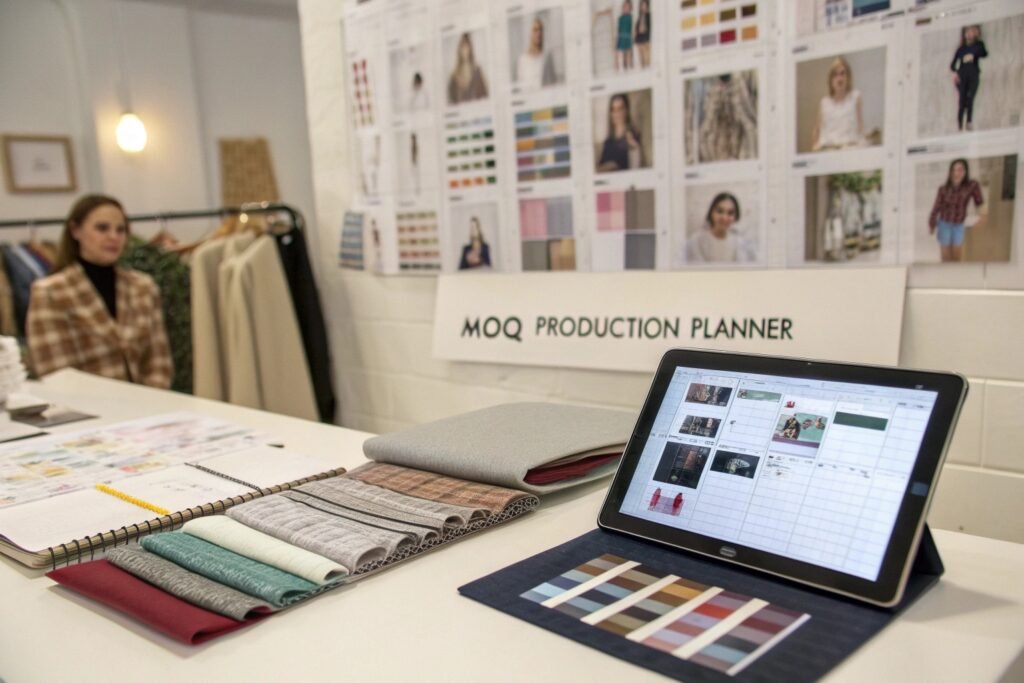
How to Maximize MOQ Efficiency?
Group colorways under one dye bath to save cost. Share weaving slots with other brands or SKUs. Start with base twill weights (like 240 GSM) and avoid rare finishes in your first run. Accepting tolerances in GSM or shrinkage lets the factory operate faster.
Working with a mill that offers real-time QR-coded tracking, like Fumao’s digital system, means you’ll get transparency and lab results throughout the run.
Should You Budget for Sampling Separately?
Yes—most organic twill projects require sampling before production. Sampling MOQs are typically 5–10 meters per color. We at Fumao offer 48-hour sample development even for organic ranges, helping clients make faster decisions and validate weaves before committing.
Also, keep some buffer in your budget for lab dip approvals, fabric testing (e.g., colorfastness), and unexpected yield loss.
Conclusion
Navigating the MOQ for organic cotton twill production isn’t just about the number—it’s about supply chain insight. From yarn origin to dyeing flexibility, certification, and finishing capabilities, every factor plays a part. Whether you’re a U.S.-based fashion startup or a large-volume buyer looking to diversify, there are options to make organic twill sourcing work—even with small runs.
With the right partner like Fumao Fabric—who offers 200m MOQ support, QR tracking, and lab-tested performance—you can unlock flexible, sustainable, and scalable fabric production from China’s textile capital.
